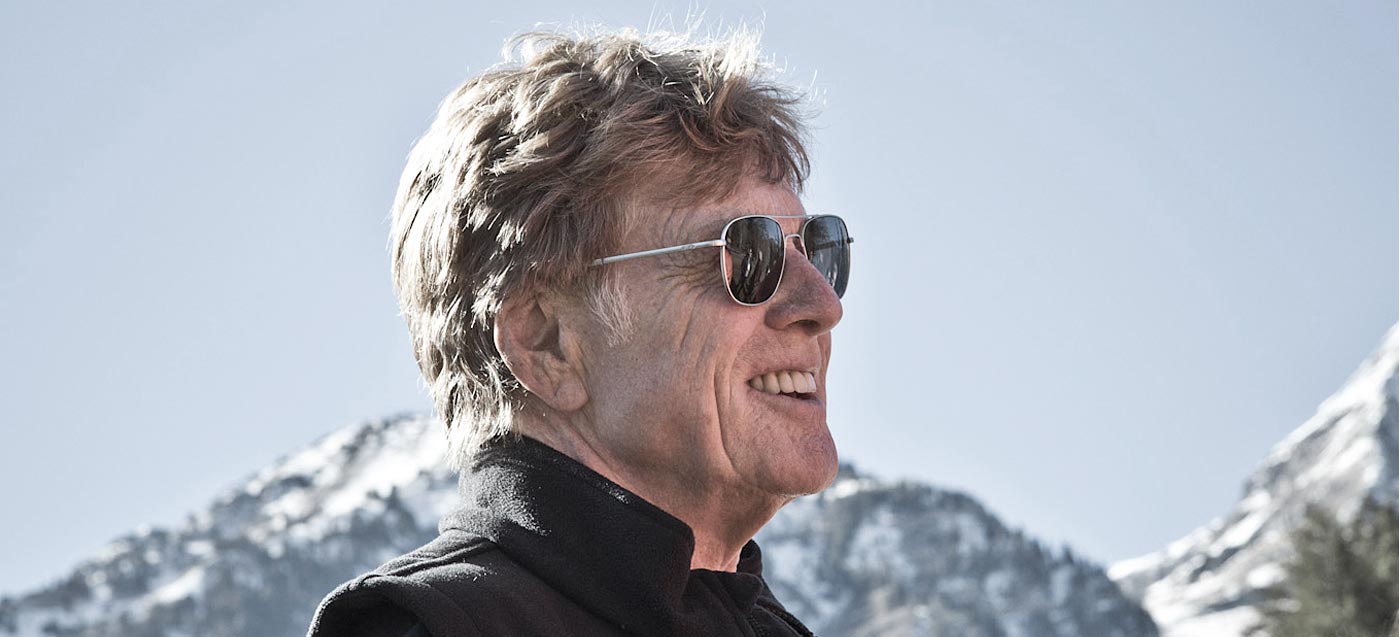Robert Redford, the man who once captivated Hollywood with his calm eyes and quiet charm, is now remembered for something far greater than fame — a lifelong legacy as a warrior for the Earth, a guardian of nature, and a voice for those forgotten on their own sacred land. When news of his passing spread, tributes poured in from across the world — not just for the movie star, but for the activist who turned celebrity into conscience. Photos resurfaced of Redford standing in the golden light of the Utah mountains, the place he called “the soul of America.” To many, his death wasn’t only the loss of a cinematic legend, but the fading of a moral compass — a man who used art not for applause, but for awareness.
From the height of his stardom, Redford chose a road few dared to take — using his fame not to sell, but to speak. He spoke of climate change when it was still whispered, of vanishing forests, poisoned rivers, and the silenced voices of Native peoples. While others chased box-office triumphs, he stood in the dirt, among activists and elders, believing that storytelling meant nothing if it didn’t serve truth. “We don’t inherit the Earth from our ancestors,” he once said, “we borrow it from our children.” It wasn’t just a quote — it became his compass.
The world knows Redford for Butch Cassidy and the Sundance Kid and The Sting, but the word “Sundance” became more than a role — it became a movement. Through the Sundance Institute, Redford created a space for independent storytellers, especially Native voices long erased from Hollywood’s narrative. The Sundance Native Lab became a sanctuary for filmmakers from Navajo, Hopi, Lakota, and beyond, giving them the chance to tell their own stories — not as subjects, but as authors of their history. Redford never called it charity. He called it justice.
His boots crossed the deserts and canyons of the American West not as an actor but as an activist. He fought coal plants in Utah, championed the Clean Air and Clean Water Acts, and co-founded a foundation to protect wild horses — those free spirits of the plains. When corporations sought to drill and desecrate Navajo sacred lands, Redford stood with tribal leaders. “You can’t own a sacred place,” he said during one hearing. “It doesn’t belong to us.” For him, environmentalism wasn’t a campaign — it was a covenant.
Those who worked with him say his quietness commanded attention more than any speech could. When Redford talked about nature, it was never statistics — it was poetry. He spoke of wind, of rivers, of the sound of trees breathing. “If people stop feeling,” he said, “they stop protecting.” That belief shaped his art. In Grand Canyon Adventure: River at Risk (2007), his deep, reflective narration didn’t just guide viewers through the canyon — it guided them into the planet’s memory.

Redford’s blending of art and activism became his life’s architecture. Through The Redford Center, he championed “impact filmmaking” — movies that don’t just entertain but awaken. Under his guidance, the center helped produce dozens of environmental documentaries, sparking global conversations about conservation and climate. He once said, “A story can change a law faster than a protest.” It was the filmmaker’s version of a battle cry.
Even as age slowed his body, it never slowed his purpose. Redford appeared at UN climate panels, clean energy forums, and wrote op-eds urging action. “I’ve seen snow melt faster, forests burn longer, and children afraid of the future,” he wrote in one piece. “If we stay silent, we are complicit.” Coming from a man who could have stayed comfortable in legacy, his words carried the weight of sacrifice.

Redford’s empathy for Indigenous people ran just as deep. He spent years learning from Navajo and Hopi elders, attending ceremonies, absorbing their worldview. He often repeated an old Native proverb: “We borrow the Earth from our children.” When the protests at Standing Rock erupted, Redford didn’t hesitate to stand with them. In a viral message, he said simply: “They’re not just protecting their water — they’re protecting ours.”
Beyond words, he created real platforms for Indigenous creators. The Sundance Native Lab became a home for Native filmmakers who would go on to make acclaimed works like Smoke Signals and The Body Remembers When the World Broke Open. Redford saw cultural equality as inseparable from environmental justice — that you couldn’t heal the land without healing the people who belong to it.

In 1992, he narrated and produced Incident at Oglala, a haunting documentary about the trial of Leonard Peltier, a Native American activist convicted after a violent clash on Pine Ridge Reservation. Redford didn’t campaign for acquittal — he demanded fairness. He used his fame not to sell sympathy but to demand truth. It was a risky act of defiance during a time when Hollywood preferred comfort over controversy.
At his Sundance Resort in Utah, where snow met pine and silence reigned, Redford could often be seen walking alone at dawn, notebook in hand. He would jot down sounds, light, the way wind moved across the valley. “Nature is the best director,” he told a group of film students. “If you listen long enough, it’ll tell you how to shoot.” That wasn’t just filmmaking advice — it was a way of living.
His death feels like the closing of a chapter in America’s moral story. The America of quiet decency, of conviction over convenience, seems smaller without him. Leonardo DiCaprio, one of the many actors inspired by him, wrote: “We lost a legend, but this planet will forever bear his fingerprints.” Indeed, Redford’s legacy isn’t written in awards or fame — it’s etched into rivers, forests, and the souls of those he awakened.
Redford lived like a storyteller and left like a symbol. But truthfully, he never really left. His spirit endures through every young activist filming a protest, every artist merging truth with beauty, every Indigenous filmmaker reclaiming a stolen narrative. They are all fragments of Redford’s unfinished story — the story of conscience in motion.
Perhaps that’s why his name transcends cinema. He was proof that fame can be moral power, that beauty can carry responsibility. In one of his last interviews, when asked how he wanted to be remembered, Redford smiled and said, “If someone watches my film and then wants to take a walk in the woods — that’s enough.”
And when the news of his death broke, thousands of people around the world did exactly that. They went outside, into forests, mountains, and seas, posting photos with a simple caption: “For Robert.” It wasn’t a trend. It was a farewell. A silent thank you to the man who taught us that to love the planet, we must first listen to it. And in every whisper of wind, in every river’s murmur, in every leaf trembling under sunlight — his story continues.

